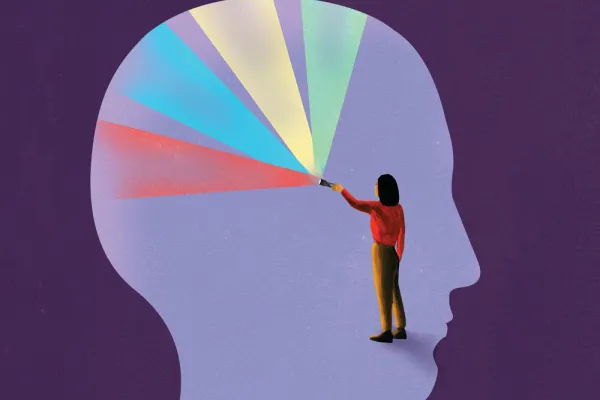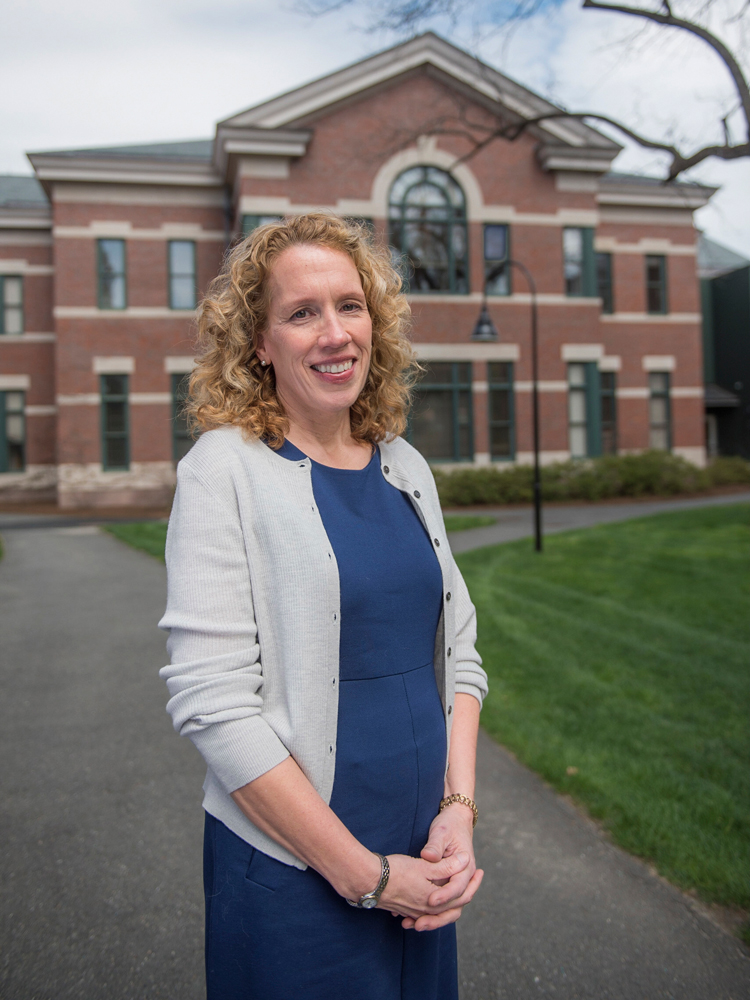Celebrating a Century of Psychology at Smith
Research & Inquiry
Years before Harvard and Yale, Smith made the science of the mind a discipline of its own

Published January 10, 2023
One hundred years ago, Smith College’s third president, William Allan Neilson, made a pioneering decision to officially establish the study of psychology as a separate entity from the philosophy department, where it had traditionally been housed.
It was a bold decision by Neilson, says Professor Maryjane Wraga, to make psychology a discipline of its own. “Smith’s decision preceded Yale by two years, Harvard by 14 years, and Wellesley by a whopping 27 years. The move indicates that early supporters of the field at Smith understood the significance of studying psychology as a science.”
Today, the department is thriving, and psychology continues to be among the most popular majors at Smith.
Wraga, who is also chair of the department, recently answered questions about the importance of this 100-year milestone and shared insights from her research into the department’s history.
Why was it bold for Smith to be among the first colleges to declare psychology as its own department?
 As early as 1872—even before one brick of College Hall had been laid—the college prospectus promised the study of psychology and described it as the “science” of the mind rather than a “philosophy,” as most scholars thought at the time. We owe a debt to the forward-thinking individuals who correctly perceived the importance of developing psychology into an independent discipline.
As early as 1872—even before one brick of College Hall had been laid—the college prospectus promised the study of psychology and described it as the “science” of the mind rather than a “philosophy,” as most scholars thought at the time. We owe a debt to the forward-thinking individuals who correctly perceived the importance of developing psychology into an independent discipline.
Why is the major particularly meaningful for a liberal arts women’s college?
Like almost every profession in the 1920s, psychology was a male-dominated field. It was extremely rare for women to be hired into long-term, tenure-track positions. Mary Henle ’34, M.A. ’35, referred to the field for herself and her female colleagues as the “migratory profession.” However, alums from women’s colleges sometimes broke through. The first edition of A.N. O’Connell and N.F. Russo’s Models of Achievement: Reflections of Eminent Women in Psychology, published in 1983, contained profiles of 15 women psychologists. Three of them were affiliated with Smith: Eugenia Hanfmann, Molly Harrower, Ph.D. ’34, and Mary Henle ’34, M.A. ’35. Without a doubt, the decision to create an independent department at Smith cleared the way for more young women to become psychologists.
How has the major evolved over the past 100 years?
The major started as a curriculum of seven basic courses with a focus on consciousness as studied in adult white males. We now offer dozens of courses in three main tracks: Mind and Brain, Health and Illness, and Person and Society—each of which has introductory, intermediate, and advanced levels. Child development has emerged as its own subfield. Thanks to advances in neuroimaging techniques, we have a greater understanding of the neural underpinnings of many psychological phenomena. Researchers also study the influence of social and cultural forces, and there’s a better understanding of the importance of including more diverse populations in studies. One theme that has remained constant, however, is the department’s emphasis on experimental psychology, which provides students with hands-on experience in conducting experiments.
What were some of the milestone moments that stood out for you in researching this anniversary?
Mary Whiton Calkins, who was the first female president of the American Psychological Association, among many other great achievements, graduated from Smith in 1885.
In 1927, German Gestalt psychologist Kurt Koffka was hired as the first William Allan Neilson Chair of Research to celebrate Neilson’s 10th anniversary as president of the college. His hiring ushered in the department’s golden era. Smith began to attract many established and up-and-coming scholars from the United States and abroad—some of whom visited, some of whom stayed. This period lasted about 15 years, until the advent of World War II.
“Psychology professors were very supportive of students, creating a natural pull to the major.”
In the 1970s, clinical research opportunities for students interested in neuroatypical populations shifted from the use of projective techniques, such as the Rorschach test, to the experimental study of clinical populations.
In the 1990s, the department moved into its current building, Bass Hall. Several faculty members consulted with members of the then–Department of Biology to create the neuroscience program.
Why does psychology continue to be among the most popular majors?
There are several reasons. First, the level of analysis—individual human beings—studied by psychologists appeals to many of our students. Second, several alums I’ve interviewed told me that psychology professors were very supportive of students, creating a natural pull to the major for many. The most important reason, I believe, is that through both coursework and research opportunities we offer our students hands-on experience in conducting psychological research in a manner that reflects the current standards of the field.
Looking forward, what excites you about the future of the department?
We’ve been thinking hard about the department’s future. In the near term, new faculty hires have been researchers with an applied focus on topics that attempt to solve real-world problems and whose work includes more diverse populations. As for the far term, we look forward to continuing technological and experimental advances that allow psychologists to gain a better understanding of the neural circuits underlying cognitive, clinical, and social phenomena and how environmental and cultural factors may influence them.
Notable Faculty
| NAME | YEARS | SPECIALTY | RESEARCH FOCUS |
| Margaret Wooster Curti | 1922–37 | Developmental psychology | Child psychology, intelligence |
| William Sentman Taylor | 1926–62 | Clinical psychology | Abnormal psychology |
| Kurt Koffka | 1927–41 | Experimental psychology | Human perception/ Gestalt psychology |
| James Gibson | 1928–49 | Cognitive psychology | Human perception |
| Elsa Siipola | 1933–72 | Experimental psychology | Personality |
| Dilman John Doland | 1953–82 | Clinical psychology | Child clinical psychology |
| Robert Teghtsoonian | 1963–96 | Experimental psychology | Psychophysics |
| Randy Frost | 1977–2020 | Clinical psychology | Obsessive-compulsive disorder, perfectionism, hoarding disorder |
| Jill de Villiers | 1979–2022 | Developmental psychology | Language acquisition |
| Faye Crosby | 1984–98 | Social psychology | Social justice, affirmative action, gender equality |
This story appears in the Winter 2023 issue of the Smith Alumnae Quarterly.
Early supporters of psychology at Smith understood the significance of studying it as a science. Illustration by Ellen Weinstein